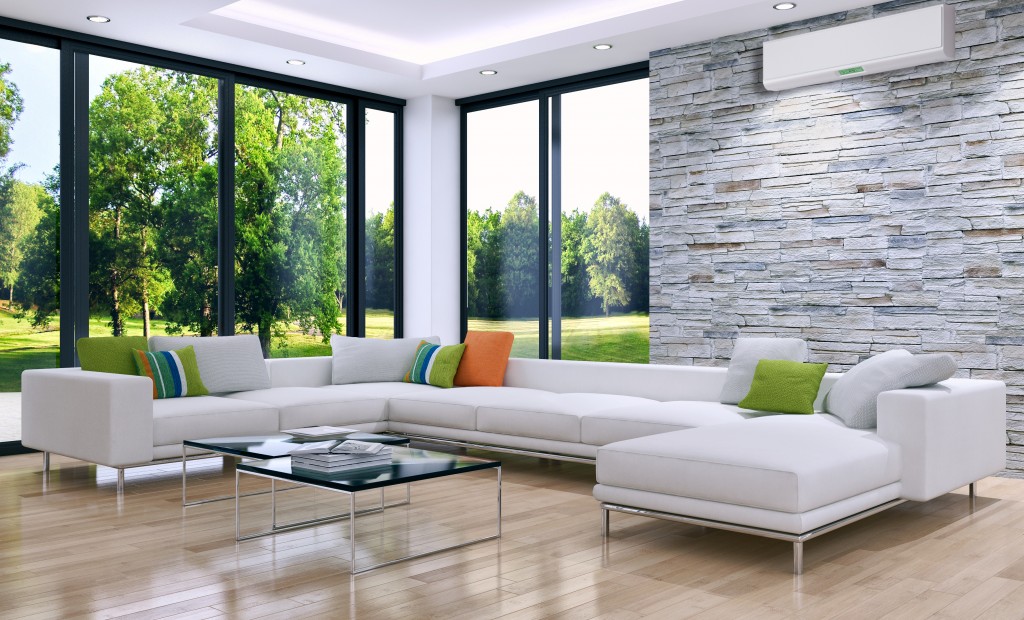In fiction, we often see depictions of futuristic houses containing robotic housekeepers helping out with chores, or large computer screens that function as the breadwinners’ primary way to earn money. Well, we live in that future now. Technology has evolved almost far beyond what depictions of the future from thirty or forty years ago showed.
Think about it: in the 60s or even 70s, their ideas about the computer of the future still remained in a bulky, box-shaped form. Far removed from the sleek and small computers that are smartphones now. While box computers still exist, there is a lot more variety than what was originally intended.
And when it comes to home technology, recent developments would probably blow their minds. While we still utilize many of the traditional forms of furniture (no need to fix what isn’t broken, right?), the small ways we use technology makes all the difference. Even for someone living in modern times, many of the technology that we use currently can be implemented in a different way in a home setting. This difference in implementation is what makes home technology different. Let’s look at a few.
Smarter Appliances
A traditional home renovation or upgrade normally involves repainting the walls, inserting a wooden fireplace, or even installing a roof deck or a loft. But nowadays, upgrading your home can also mean purchasing smart furniture. While you may have heard of smart furniture (or probably even own one), what you might not be aware of is that most of these smart furniture pieces are using a different form of a popular smartphone operating system.
The difference in utilization with the same technological capability makes for an interesting situation; fridges now have an LCD touch panel that can tell you the contents of your fridge, and what’s missing from it, display recipes and other instructions, or even order groceries online. Smart TVs connect to the Internet, accessing not just your regular TV channels but also streaming services that everyone enjoys. Appliances have become smarter, and in the future, we can expect them to be even more.
Home Automation

A recurring fantasy in many futuristic depictions often involves the automation of mundane tasks such as sweeping the floor, watering the lawn, or feeding the pets. Well, we live in that time now. Many chores can now be automated, with very little human interference required. Robotic vacuum cleaners are enjoying great popularity, and so do automatic pet feeders. Even appliances nowadays can function automatically. Most newly developed appliance house a small computer that can receive instructions.
Even cleaning machines such as a dishwasher can now be programmed to routinely clean the dishes. Heating water, cooking in an oven, and many more can be automated, thanks to development in tech.
Voice Assistants
Conversing with a robot is no mere daydream anymore, and robots don’t sound robotic too. They sound very much like us, with intonation and inflection in their voice. Voice assistants are the newest piece of tech slowly taking the world by storm. As more major companies release their own version, we can expect drastic improvements with each release.
While an off-the-cuff conversation is still too early to happen in a consumer level, most existing voice assistants in the market are smart enough to follow verbal commands, even complex verbal commands such as playing a certain song whose title you forgot, or even asking what a word means, or telling it to connect to another smart device to give it instructions. Voice assistants are the future, and the statistics agree. Perhaps in the future, voice assistants will become smart enough to process information with a little prodding- much like the AI in popular superhero films.
Better Security Systems
Of course, all of these developments are designed with convenience in mind. But when it comes to safety and crime deterrence, technology isn’t slacking either. Security cameras are now smaller than ever, easily concealable, and is capable of better picture quality. The presence of smart locks makes breaking into houses a lot more difficult- as they can alert the homeowner if something amiss happens.
Even motion sensors are now available, making sure that you will know if suspicious events arise. Fire alarms, CO2 detectors, and other hazard detecting systems are also smarter now, sending information to you in real-time. These make sure that you are covered from as many potential threats as possible.
All of these might sound expensive, and something that only multi-millionaires can afford. But in reality, most of these technologies have become accessible to the point of being available for mass-market sales. With technology like this, we can hope for a safer future.

